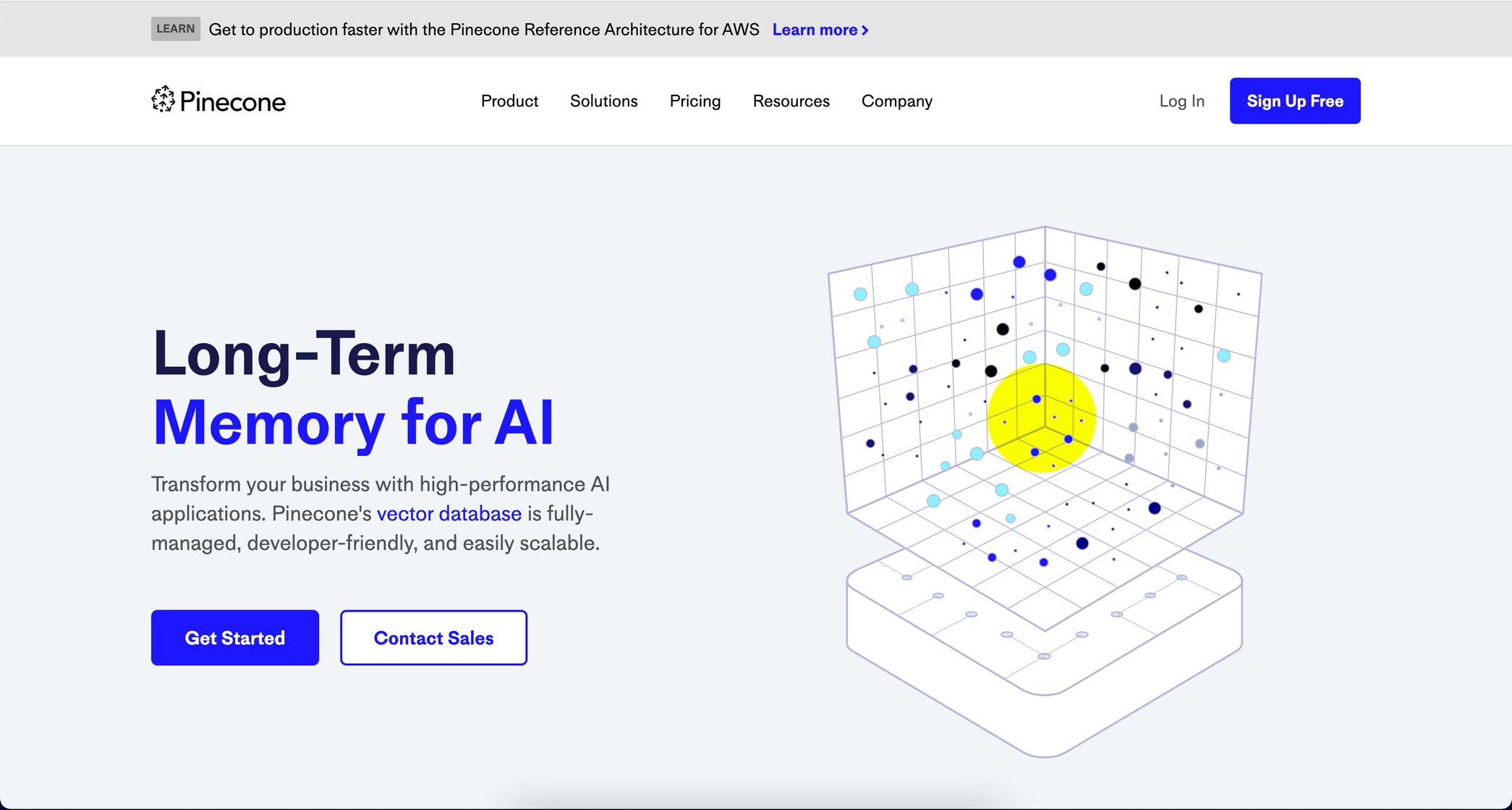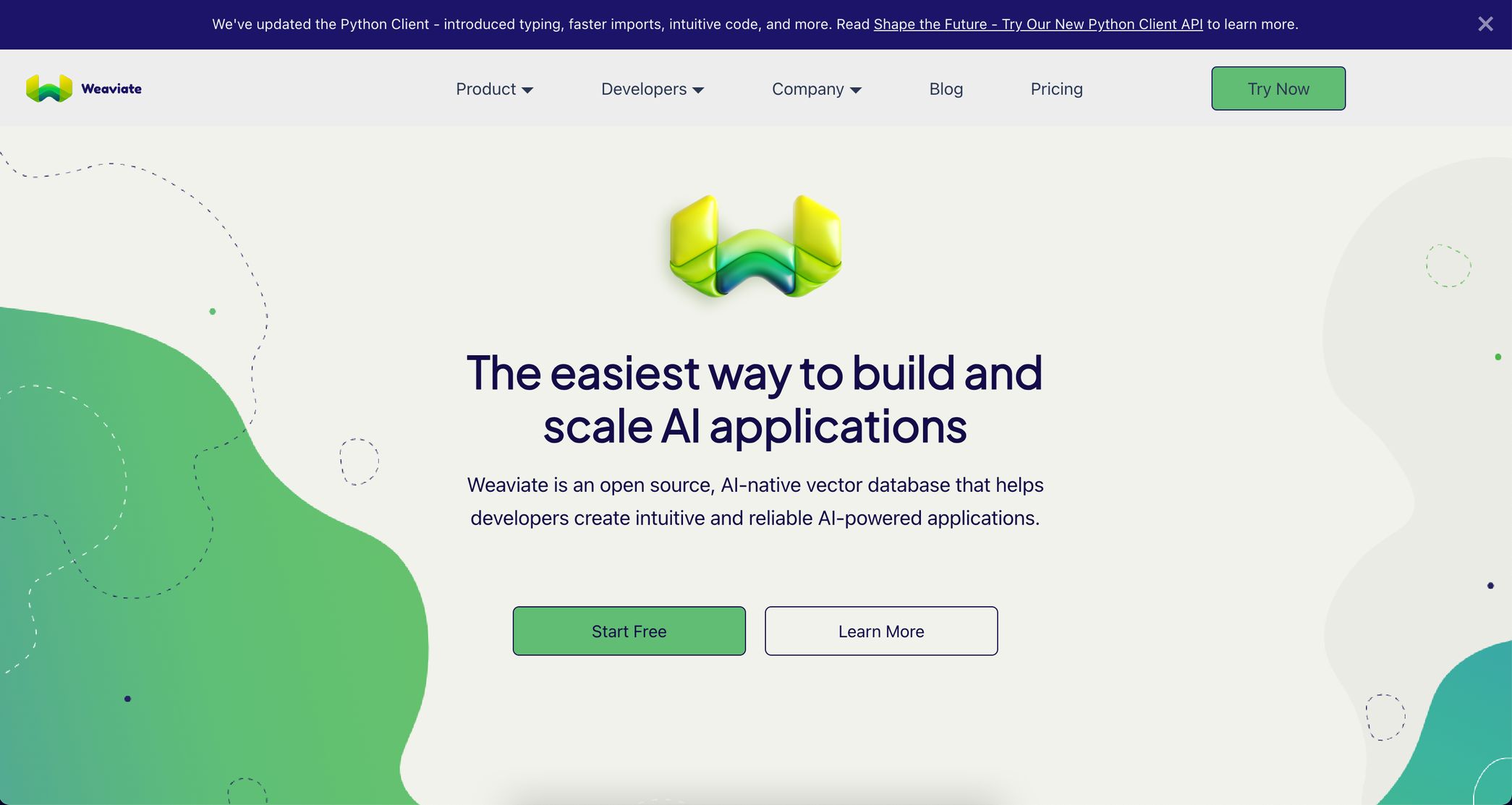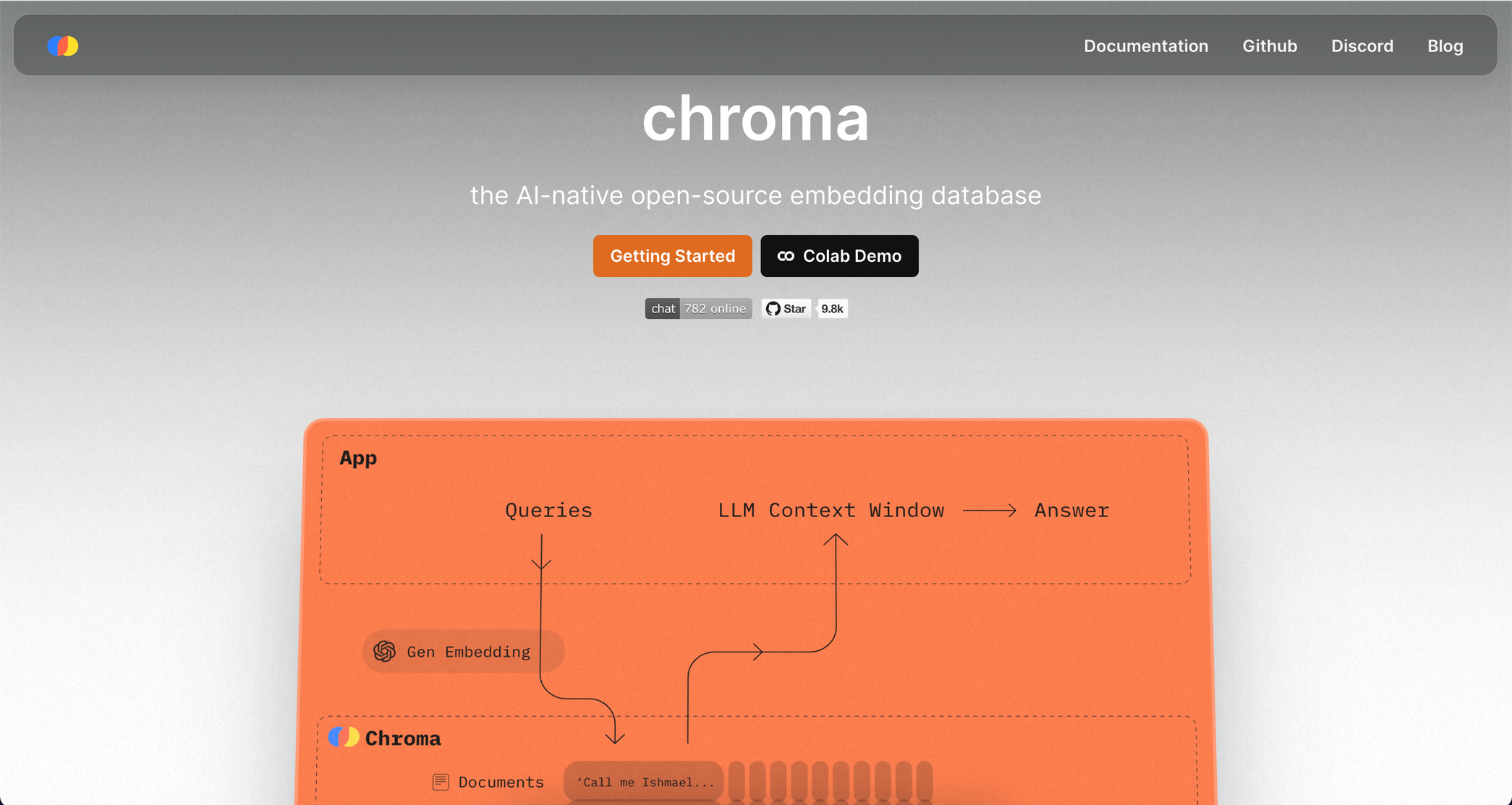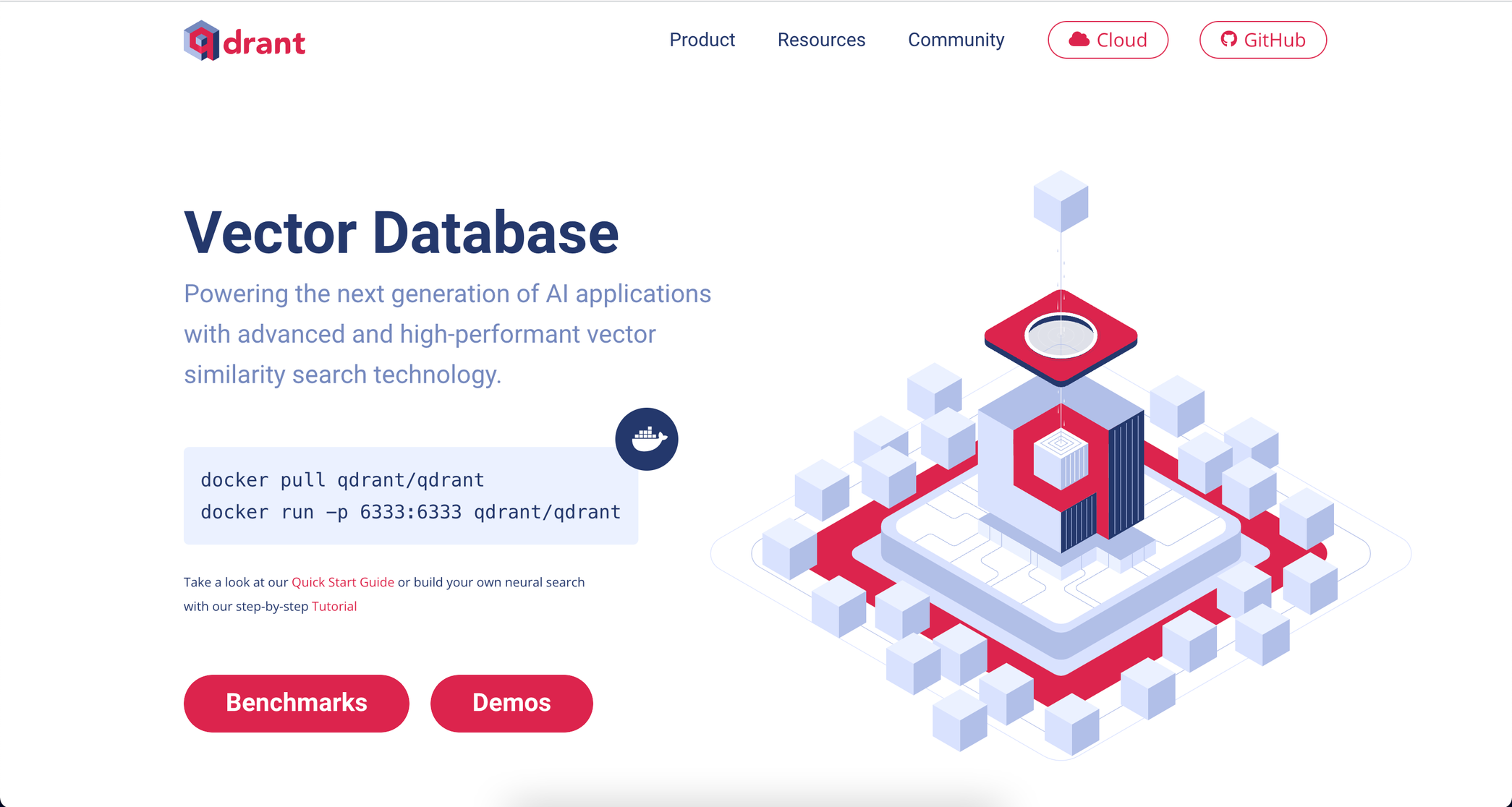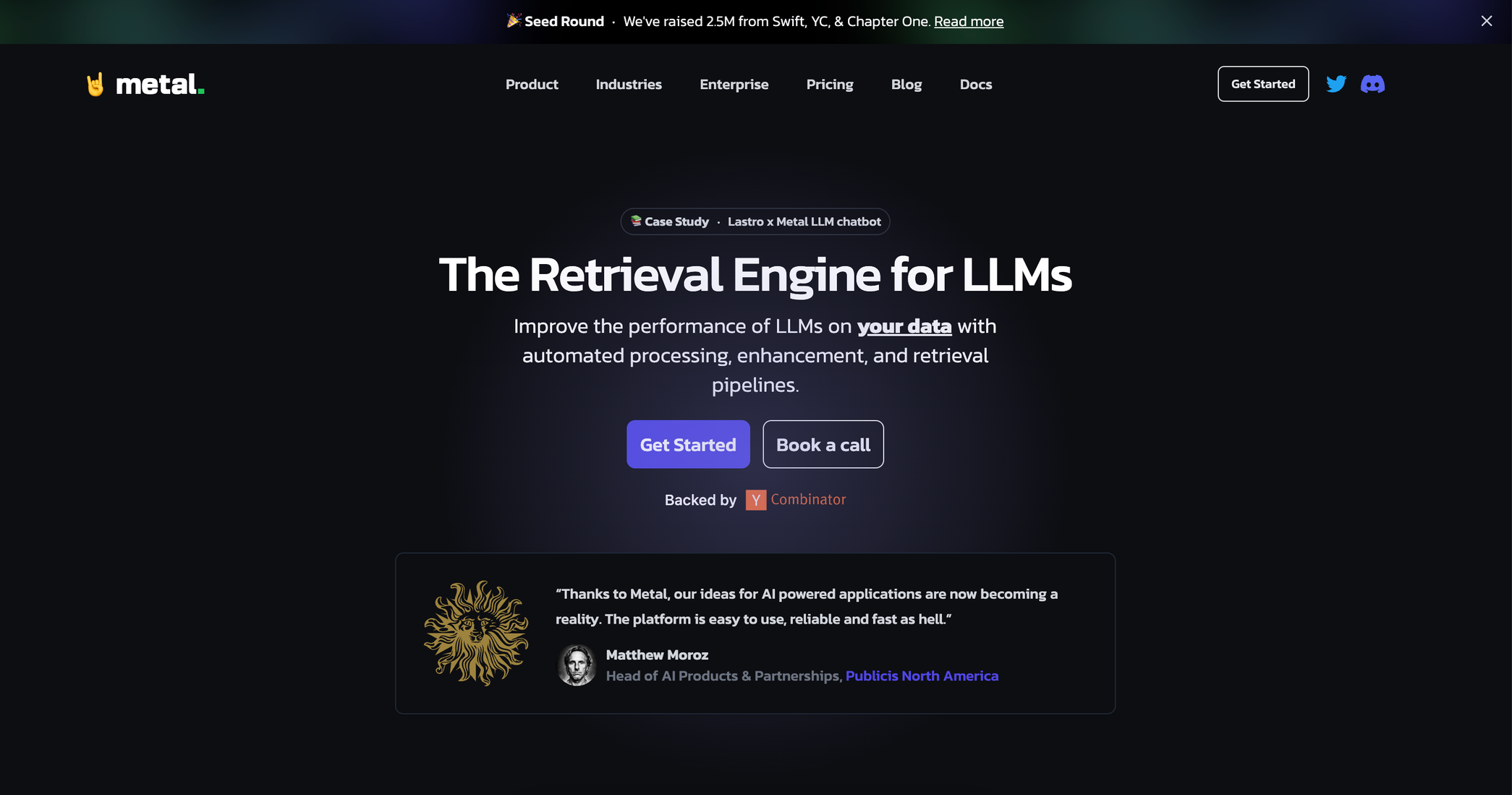Vector Database Showdown: Top Options Compared
The surge in AI applications has been nothing short of extraordinary, propelling businesses toward new horizons of efficiency and growth. However, this surge brings forth a formidable obstacle – effectively managing the vast amounts of high-dimensional data inherent to AI processes.
Traditional databases, once stalwarts of data management, now grapple with the intricacies of this new data frontier, necessitating a paradigm shift in our approach to data storage and retrieval. To fully harness the power of AI, we must adopt a new paradigm for data storage and retrieval, and vector databases offer a promising solution.
this blog post, we will discuss the key factors to consider in choosing a vector database, and our review of the top vector databases in the market today.
Key Selection Factors: What to Look For
In the quest for an adept vector database, several key considerations demand meticulous attention. Let's dissect these factors, providing clarity and insight to empower your decision-making process:
1. AI Integration
Effortless compatibility with leading AI libraries such as TensorFlow is paramount. Opt for a database that seamlessly integrates with popular frameworks, empowering you to leverage the full potential of your preferred machine-learning tools.
2. Data Privacy
In today's data-centric environment, prioritizing data privacy is imperative. Seek a vector database with robust security features to safeguard sensitive information and ensure its confidentiality.
3. Scalability
As your AI initiatives expand, so does the volume of your data. Choose a database capable of handling this exponential growth without compromising performance or causing future complications.
4. Strong Community & Support
A vibrant user community and responsive support team are invaluable, especially when asking for help in resolving technical issues you might encounter.
5. Performance
Your vector database should excel in high-speed data retrieval and processing, especially with substantial volumes.
6. Customizability
Your vector database should grow and flex with your project's changing requirements. Seek options that offer customization, ensuring adaptability as your project evolves.
Exploring the Landscape: A Survey of Popular Options
Now that we've covered what to look for in a vector database, let's dive into some popular options. Check out the summary table at the end of the list for a quick overview!
1 - Milvus
Milvus is an open-source vector database with a vast community of users and extensive learning resources. It's favored by high-profile companies and offers strong demos. However, its nature of use by AI-focused firms could mean its AI capabilities may not have been as extensively tested or used in a professional context as some of the other databases.
Pros
1. High-Profile Users: Milvus is favored by industry heavyweights like IBM, NVIDIA, AT&T, eBay, and PayPal. While only a handful of these firms focus on AI, the sheer quantity of businesses utilizing Milvus cannot be overlooked.
2. Vast Learning Resources: The amount and quality of learning content available for Milvus is extensive, which can be highly beneficial for new users or those looking to build their skillset.
3. Open Source: As an open-source platform, Milvus offers the flexibility and freedom that come with community-driven development and improvements.
4. Strong Demos: With demos such as osschat.io, Milvus showcases its capabilities and potential applications effectively.
Cons
1. Nature of Use: Even though many high-profile companies use Milvus, it's worth noting that only a few of these firms are AI-focused. This could mean that its AI capabilities may not have been as extensively tested or used in a professional context as some of the other databases.
2 - Pinecone
Pinecone is a vector database endorsed by industry leaders like Microsoft and Midjourney. It offers flexible hosting options, reasonable pricing, and extensive documentation. However, its complex pricing structure could be confusing.
Pros
1. Strong Endorsement: Pinecone's use by businesses like Microsoft and Midjourney acts as a strong endorsement of its capabilities.
2. Host on Major Cloud Platforms: The ability to host this database on AWS or Google cloud platforms adds an extra layer of flexibility.
3. Reasonable Pricing: They charge for the storage of data, not per data point, making it a potentially more cost-effective option for large data sets.
4. Extensive examples: Pinecone provides ample examples to showcase the capabilities of the database, which can aid users in understanding its functionality.
Cons
1. Complex Pricing Structure: Terms specific to their database, like pods and indexes, make their pricing structure more complicated. This could potentially cause some confusion for the users.
2. Comparison with Atlas: Deciding between Pinecone and Atlas could be challenging as both seem to offer robust features. While Atlas provides fewer examples of working code, an experienced developer might not need them.
3 - MongoDB Atlas
MongoDB Atlas is a cloud-based vector database that offers strong AI integrations and a freemium pricing plan. However, its inability to self-host and potentially expensive pricing for large datasets could be drawbacks.
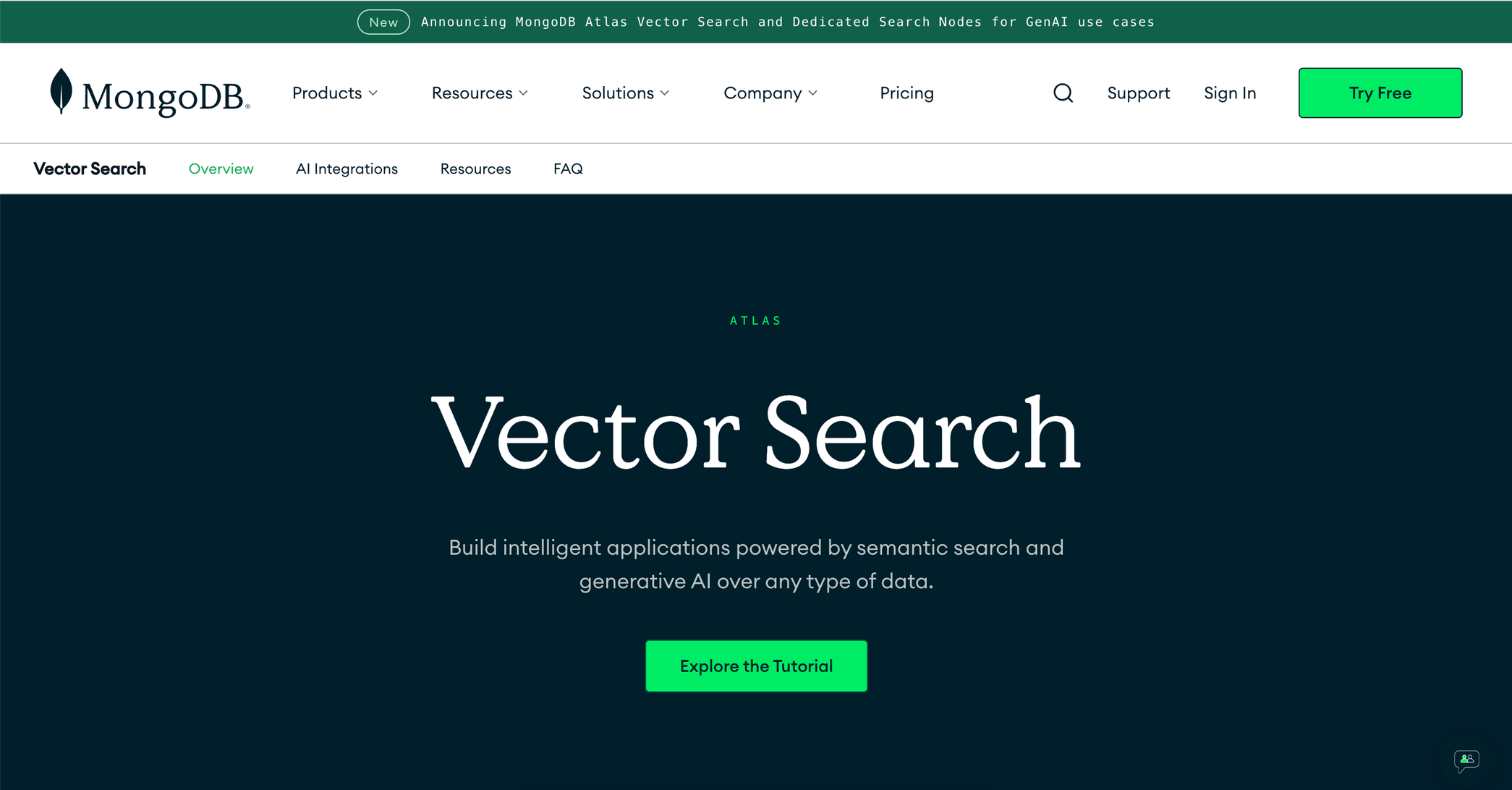 https://www.mongodb.com/products/platform/atlas-vector-search
https://www.mongodb.com/products/platform/atlas-vector-search
Pros
1. Renowned User Base: Atlas enjoys the trust of engineers from tech giants such as Google, MongoDB, Hugging Face, and Microsoft. This trust factor gives Atlas a certain level of credibility in the market.
2. Strong AI Integration: Atlas has a solid range of direct AI integrations that were previously overlooked. These integrations, coupled with other robust features, make Atlas a sound choice for businesses looking to leverage AI.
Cons
1. No Self-Hosting: The inability to self-host with Atlas could be a significant setback for businesses that want a fully self-contained system. This restriction limits the flexibility and control that businesses have over their data and operations.
2. Pricing Model: Atlas' pricing model could get expensive beyond 250k data points. While this may not be a concern for small businesses, larger operations with millions of data points may end up with bills in the hundreds to thousands every month.
3. Management Time/Cost: An additional potential issue with Atlas is the time and cost required to manage the instance. Either the clients will be billed by us and we manage it, or they will have to manage it themselves. This could lead to unnecessary back-and-forth, with businesses having to watch their bill increase significantly in a short period. Such a situation could be avoided with other databases that do not charge per data point.
4 - PGVector
PGVector is an extension for the PostgreSQL database that adds vector search capabilities. It's beneficial for businesses already using PostgreSQL and adds an extra layer of functionality. However, it's not a standalone database and requires Postgres proficiency.
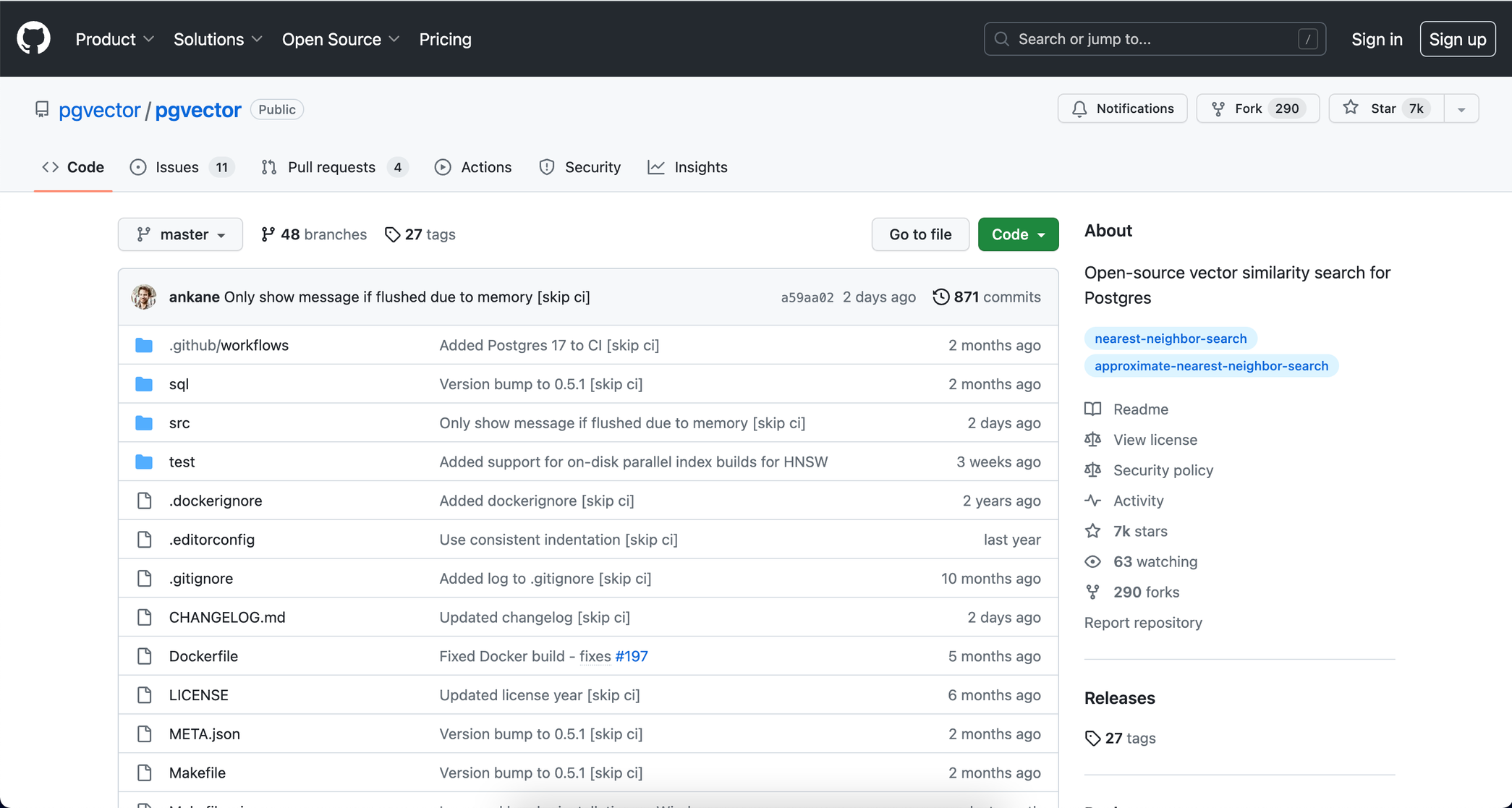 PGVector is available on GitHub: https://github.com/pgvector/pgvector
PGVector is available on GitHub: https://github.com/pgvector/pgvector
Pros
1. Built for Postgres: PGVector is created specifically for use with Postgres, an established and widely used DBMS, which could be advantageous for experienced Postgres developers.
2. Additional Layer to Existing System: It can be a beneficial addition to an already existing Postgres database, helping to enhance its functionality.
Cons
1. Not Standalone: PGVector is not a standalone database but an extension of an existing one. This could be a disadvantage for those seeking a separate database solution.
2. Requires Postgres Proficiency: It seems like the most value from this tool would be realized by having extensive knowledge of Postgres, which could be a potential hurdle.
5 - Weaviate
Weaviate is another open-source vector database with a strong focus on AI. It has simple examples for generative AI use cases and comprehensive documentation. However, its lack of recognition in the AI community and obscure funding sources raise some concerns.
Pros
1. AI Focus: Weaviate's commitment to AI is evident. Their focus on AI is showcased through simple examples they offer for generative AI use, which can be a valuable resource for those who are learning or looking to leverage AI capabilities.
2. Impressive Documentation: Another plus point for Weaviate is its thorough and comprehensive documentation. This makes it easier for users to navigate and understand the features of the database.
Cons
1. Lack of Recognition in AI Community: Despite their strong focus on AI, Weaviate has yet to establish a solid reputation in the AI community. Their presence is still relatively unknown, which could be a potential concern.
2. Obscure Funding Sources: The investors backing Weaviate are largely unknown venture capital funds. This might raise some questions about their long-term stability and growth prospects.
3. Limited Real-World Examples: There's a notable lack of real-world examples showcasing the effective use of Weaviate, which makes it difficult to assess its practical application and performance in a live environment.
6 - Chroma
Chroma is an open-source vector database with an AI-centric roadmap. Though it offers support for the LLM library and aims to simplify AI development, keep in mind that its documentation may be sparse compared to other options.
Pros
1. Open-Source Commitment: Chroma's dedication to open-source projects is a notable strength. Open-source software promotes transparency and community-driven development, which can lead to enhanced innovation and security.
2. Focus on AI Integrations: Chroma has prioritized the development of direct AI integrations, which can streamline operations and ultimately lead to more efficient and effective data analysis.
3. LLM Libraries Support: The support for major LLM libraries like LangChain is another plus. This can open up new avenues for handling and processing language data in our projects.
4. AI-centric Roadmap: Chroma's roadmap, which is notably centered on AI memory and storage, indicates a future-proof approach that aligns well with our project direction.
Cons
1. Sparse Documentation: Unfortunately, the lack of comprehensive documentation could pose challenges, especially when trying to troubleshoot issues or understand complex features.
2. Small Industry Footprint: As a smaller player in the industry, it's difficult to gauge Chroma's performance and reliability based on user reviews and case studies. This can make it a bit of a gamble to incorporate into a major project.
7 - Qdrant
Qdrant is an open-source vector database that is memory-safe and performant. It has multiple working demos and integrations with major libraries. However, its relatively small industry footprint could pose some risk.
Pros
1. Memory-Safe and Performant: Being written in Rust, Qdrant is highly performant and memory-safe, which can be of tremendous value in data-intensive operations.
2. Multiple Working Demos: The availability of several working demos and numerous client libraries aids in understanding and implementing Qdrant.
3. Integrations with Major Libraries: Qdrant's integration with libraries such as LangChain and the OpenAI retrieval plugin could be beneficial for specific use cases.
Cons
1. Industry Presence: Given that Qdrant is still trying to establish its name, its industry footprint remains relatively small, making it potentially risky.
8 - Metal
Metal is a subscription-only vector database with capital backing. It offers hosting on major cloud platforms and reasonable pricing. However, its subscription model and limited hosting options could be drawbacks.
Pros
1. Capital Backing: Metal has secured 2.5MM in capital funding, which could support its growth and development.
Cons
1. Subscription-Only Model: The subscription-only model could be a potential drawback for businesses looking for more flexible pricing options.
2. Limited Hosting Options: With hosting only available through Metal, businesses miss out on the flexibility and control that self-hosting offers.
3. Unknown Pricing Details: The lack of clear details about the business pricing and storage-based cost necessitates contacting the company, which could be inconvenient.
4. Small Community: The smaller community on their discord server might indicate a lesser degree of user engagement and support.
Summary
Here's a concise table summarizing our research findings.
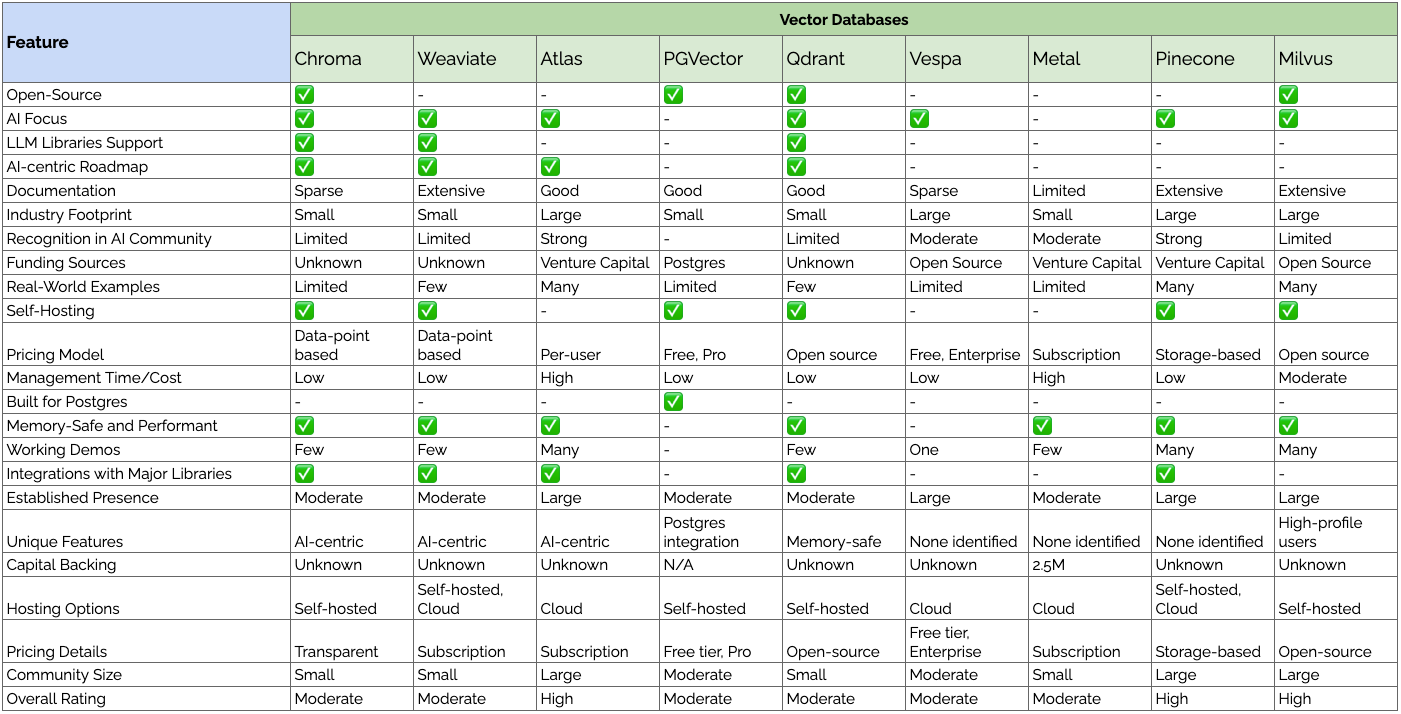
Our Top Choices
After a thorough exploration of the vector database landscape, two standout choices have earned our endorsement:
Open Source Selection: Milvus
Harnessing Open Source Power
For those seeking an open-source solution, Milvus stands out as our preferred recommendation. Its robust feature set, coupled with its thriving community support, makes it an ideal partner for businesses embarking on their AI journey. Milvus' versatility and scalability ensure its adaptability to a wide range of use cases, empowering organizations to seamlessly integrate AI into their operations.
Paid Selection: Pinecone
Investing in Precision
When prioritizing performance and precision, Pinecone emerges as the clear frontrunner in our paid category. Its streamlined architecture and exceptional query performance make it an invaluable asset for businesses seeking to optimize their AI capabilities. Pinecone's investment-worthy nature ensures that organizations can accelerate their AI initiatives with confidence.
Closing
In conclusion, the world of vector databases unfolds as a critical arena for businesses navigating the complexities of AI applications. As we embrace the transformative potential of advanced data management, the choices we make in selecting vector databases become instrumental in propelling us toward a future where AI-driven innovation knows no bounds. Choose wisely, and unlock the true potential of your data in the age of AI.


